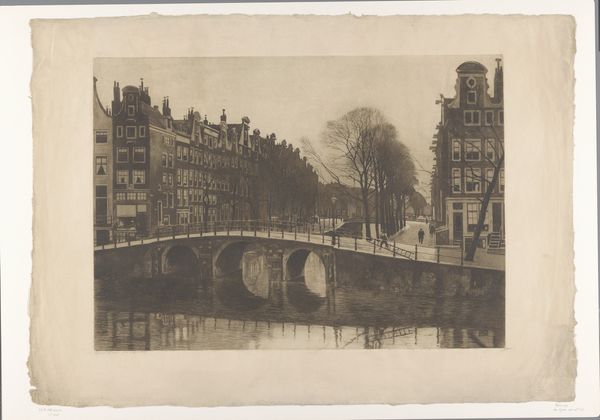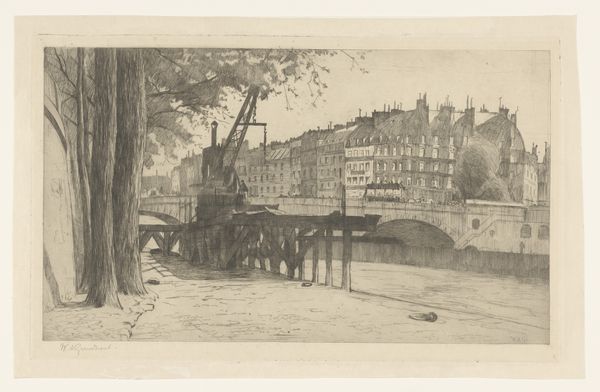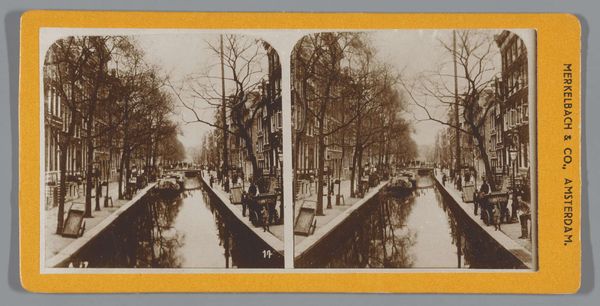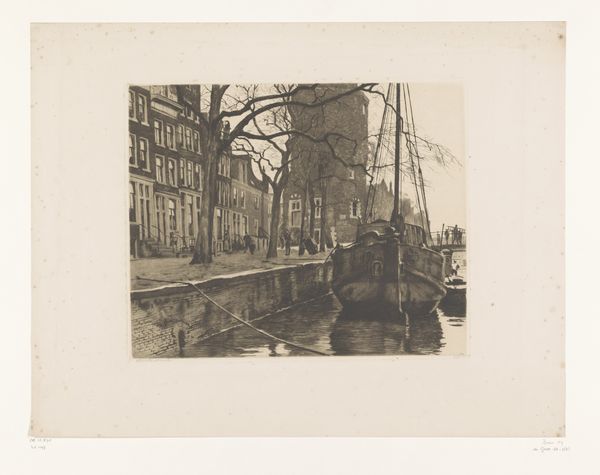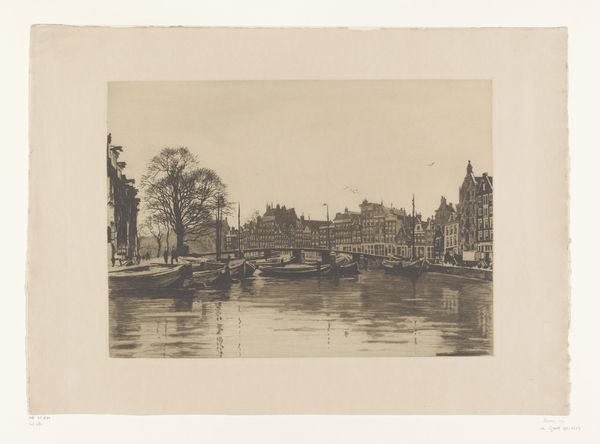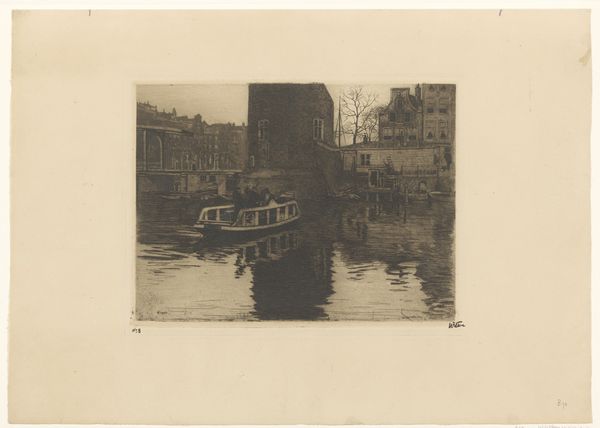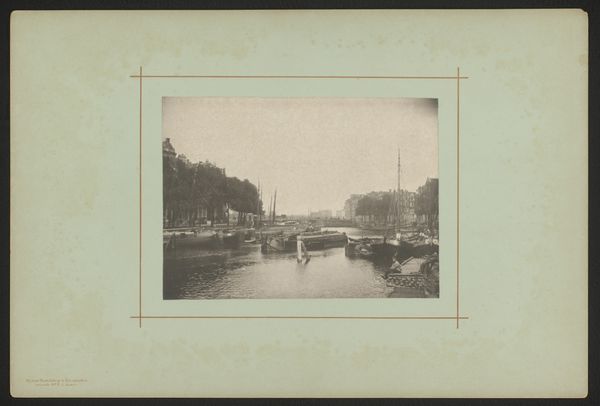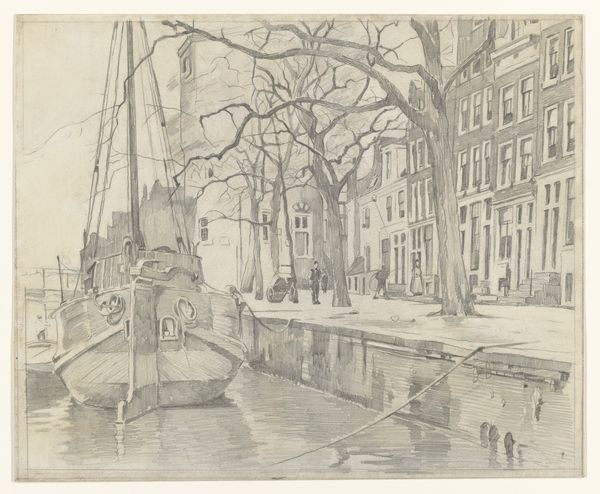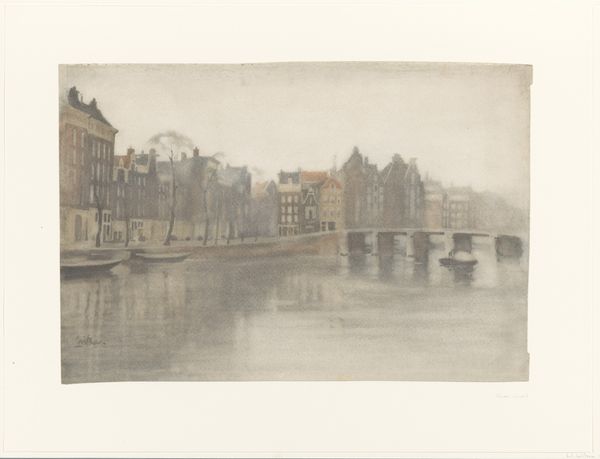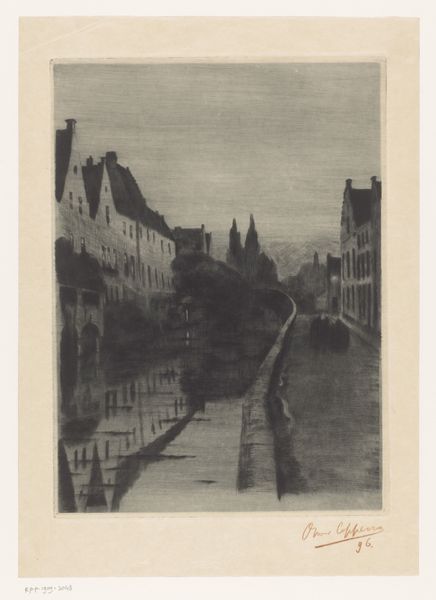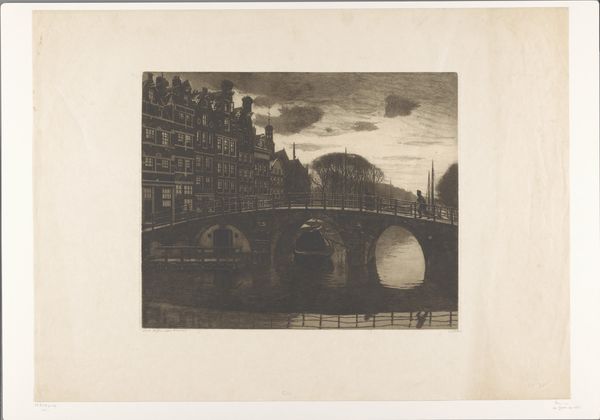
Dimensions: height 436 mm, width 535 mm
Copyright: Rijks Museum: Open Domain
Curator: What a subdued, contemplative scene. This etching, titled "Herengracht te Amsterdam," was created by Willem Witsen sometime between 1901 and 1909. Editor: It's a fairly bleak impression, wouldn’t you agree? The almost monochromatic tones create a sense of stillness. I notice the sharp lines of the architecture contrast with the soft, blurred reflections in the canal. Curator: The composition really centers the bridge as a connector – perhaps reflecting Amsterdam's role as a vital hub for trade and exchange throughout its history. Consider the Herengracht’s origins; it was conceived in the 17th century as a district for Amsterdam’s elite, solidifying class structures within urban development. Editor: Precisely! And the materiality speaks volumes about that elite status. Etching itself requires specific resources: metal plates, acids, the printing press—tools of the burgeoning capitalist class, mirroring the opulence lining this very canal. Who controlled the means of artistic production then? And for whom? Curator: Those are important questions. We need to ask whose narratives are privileged in the visual representation of Amsterdam. Witsen belonged to a group of Dutch Impressionists who found beauty in everyday scenes, but his perspective was undoubtedly shaped by his social position. Editor: Agreed. The subtle gradations of tone achieved via etching highlight the skill and labor invested. Look at the textures: from the rough surface of the buildings to the watery reflections; all meticulously rendered to satisfy a market valuing refined aesthetics. Curator: I’m thinking about the lack of human presence in the print. It makes the scene seem almost ghostly. We are confronted with the structures, the very foundation of commerce and living that affect power relations, which are still here now, though nearly absent people populated them. Editor: Yes, it prompts us to reflect on what isn’t being shown: the working class, the industries that funded this expansion… Who built this bridge? Whose labor is missing from the aestheticized image? The process itself veils as much as it reveals. Curator: Seeing through that veil requires careful consideration of context and acknowledging the power dynamics embedded within seemingly objective depictions of cityscapes. Editor: An observation I am grateful you made! Perhaps understanding both art making process, material and the social dynamics at play opens paths to reinterpret these traditional depictions.
Comments
No comments
Be the first to comment and join the conversation on the ultimate creative platform.

